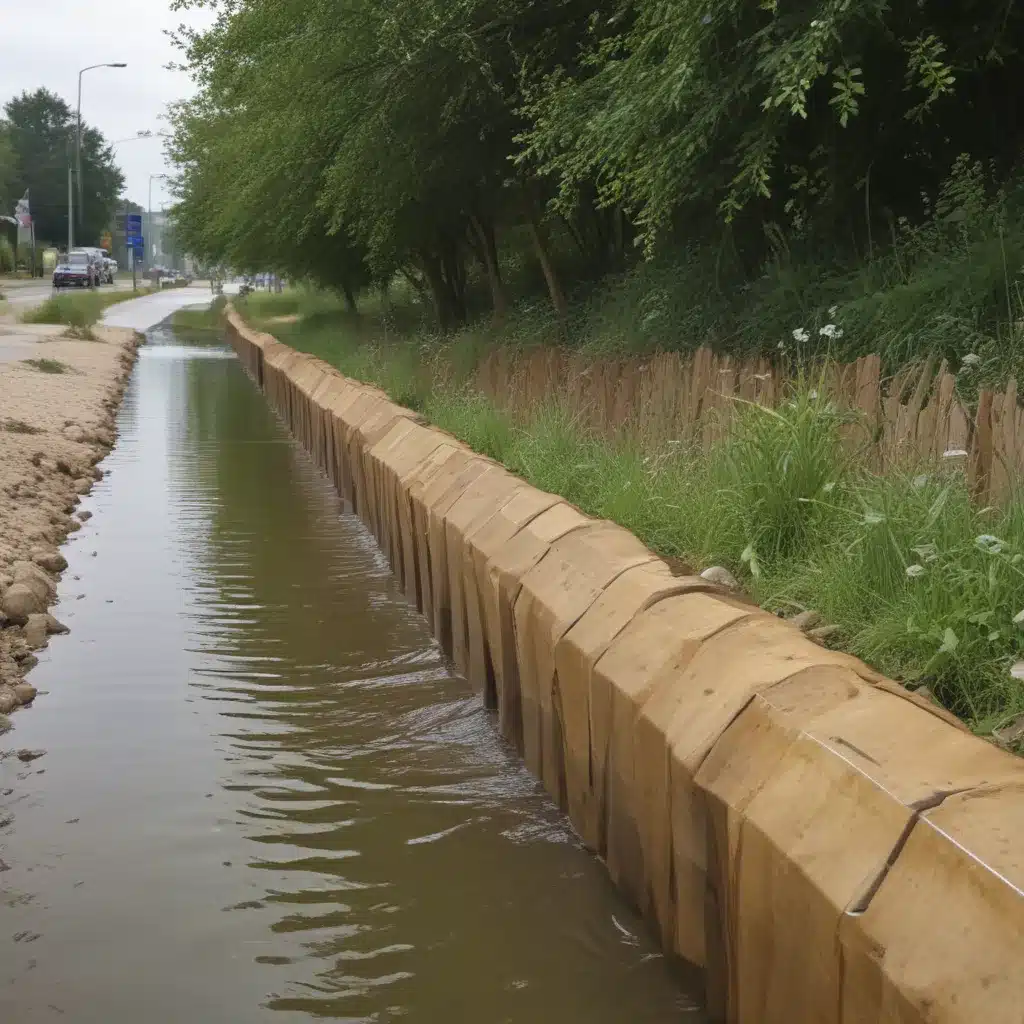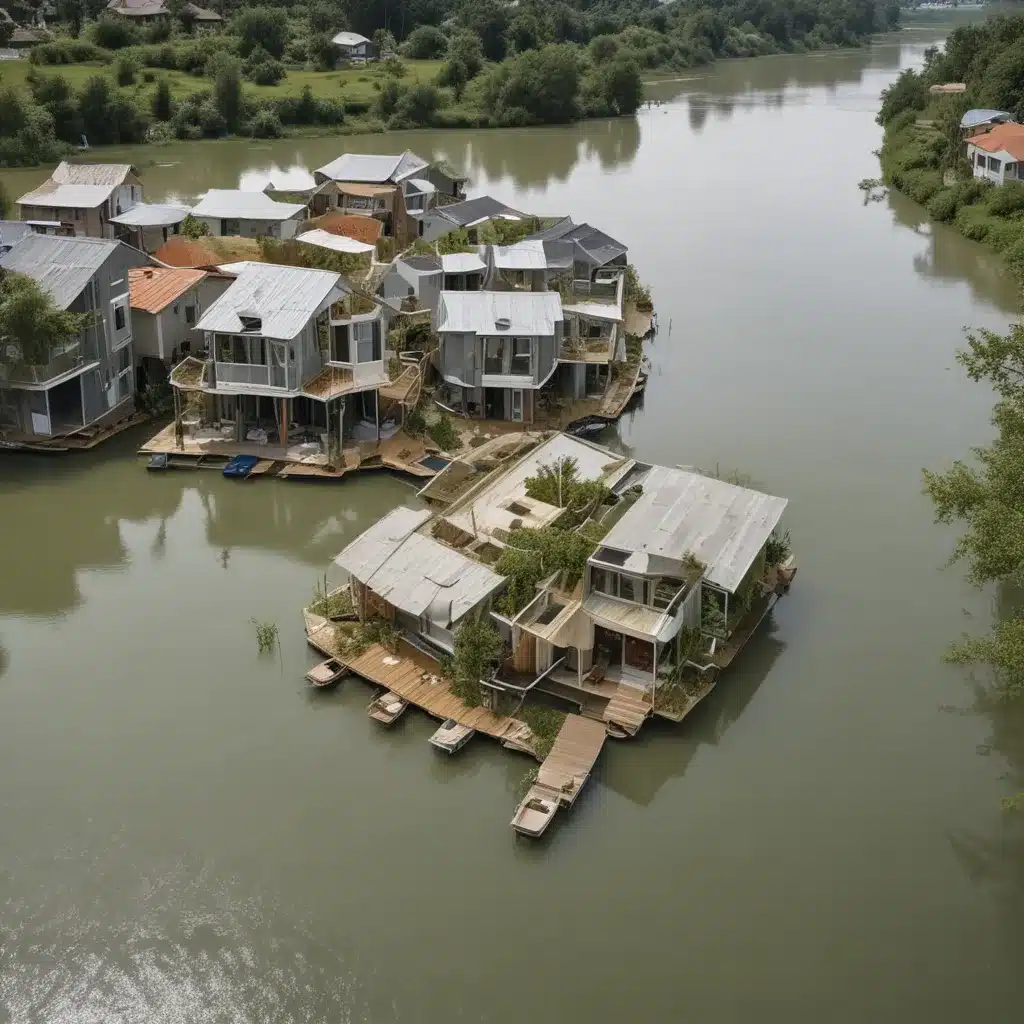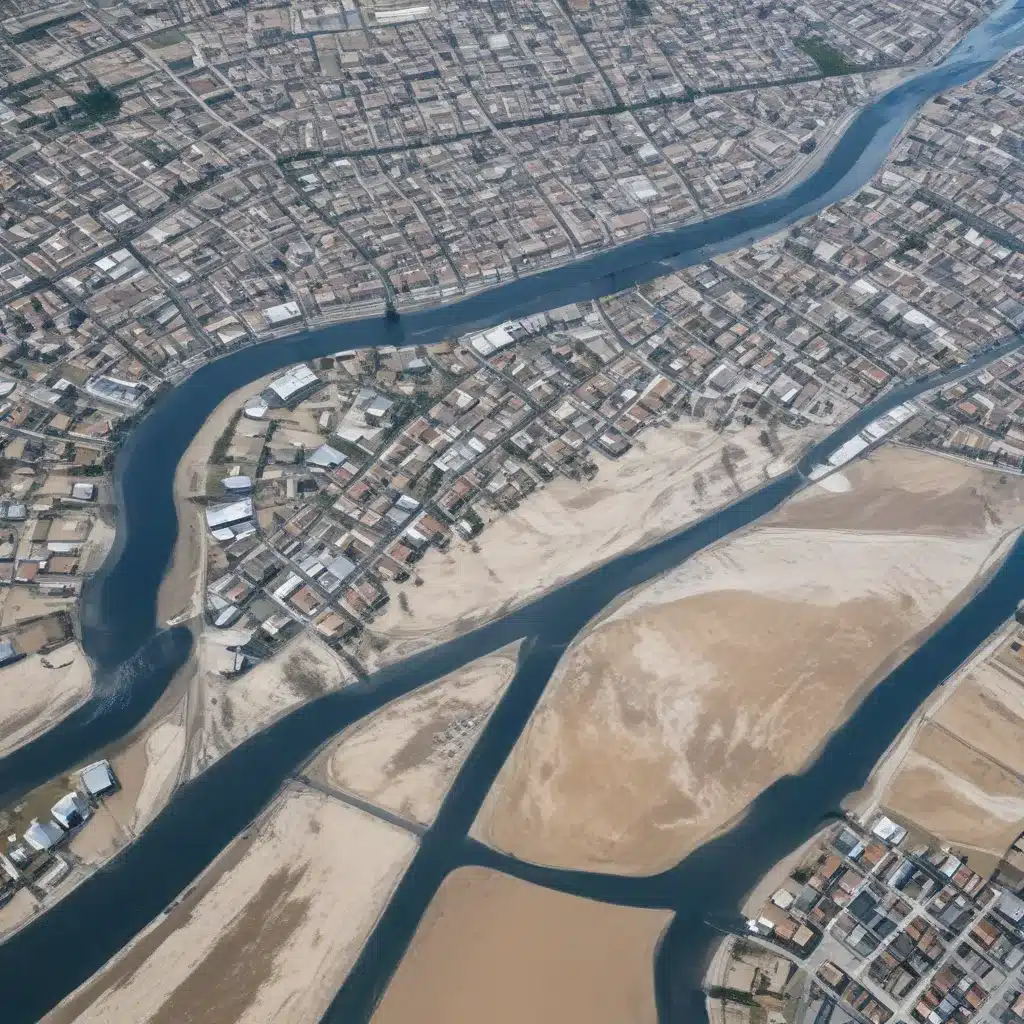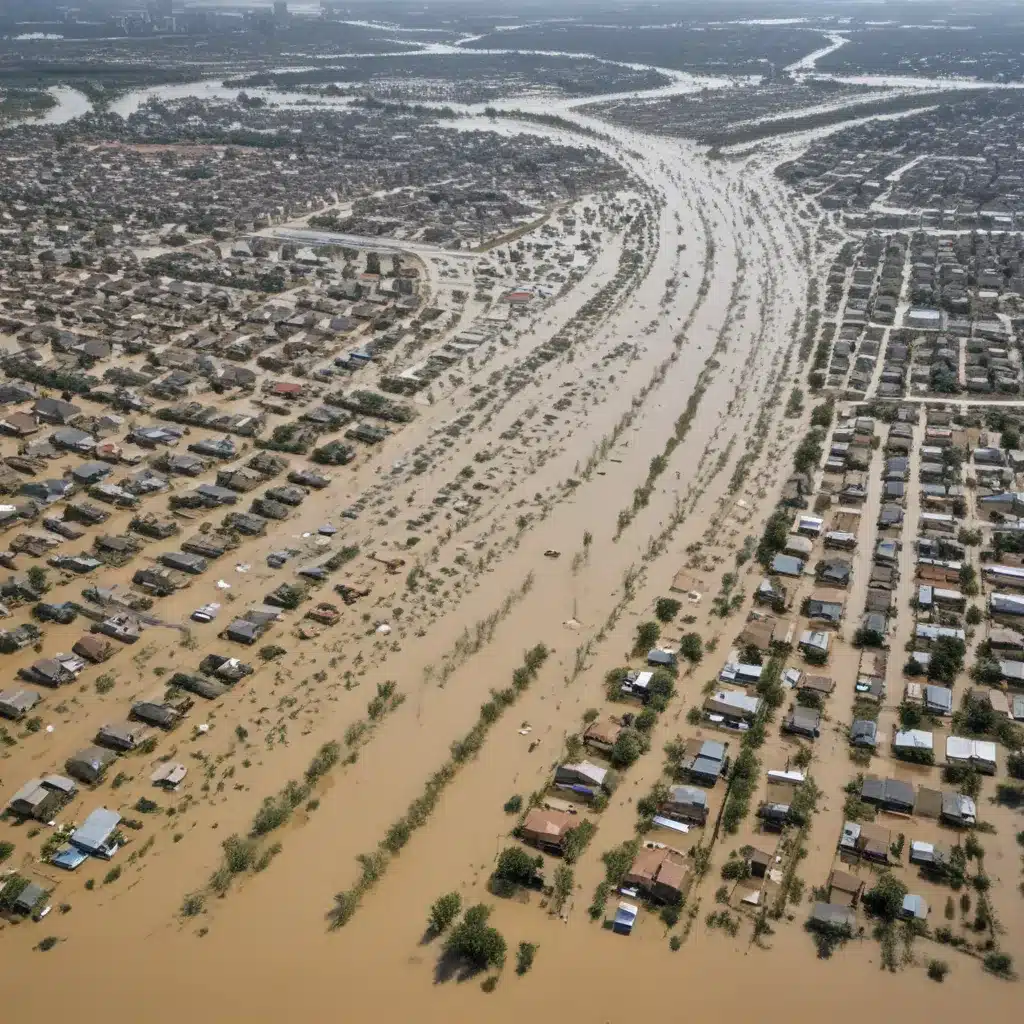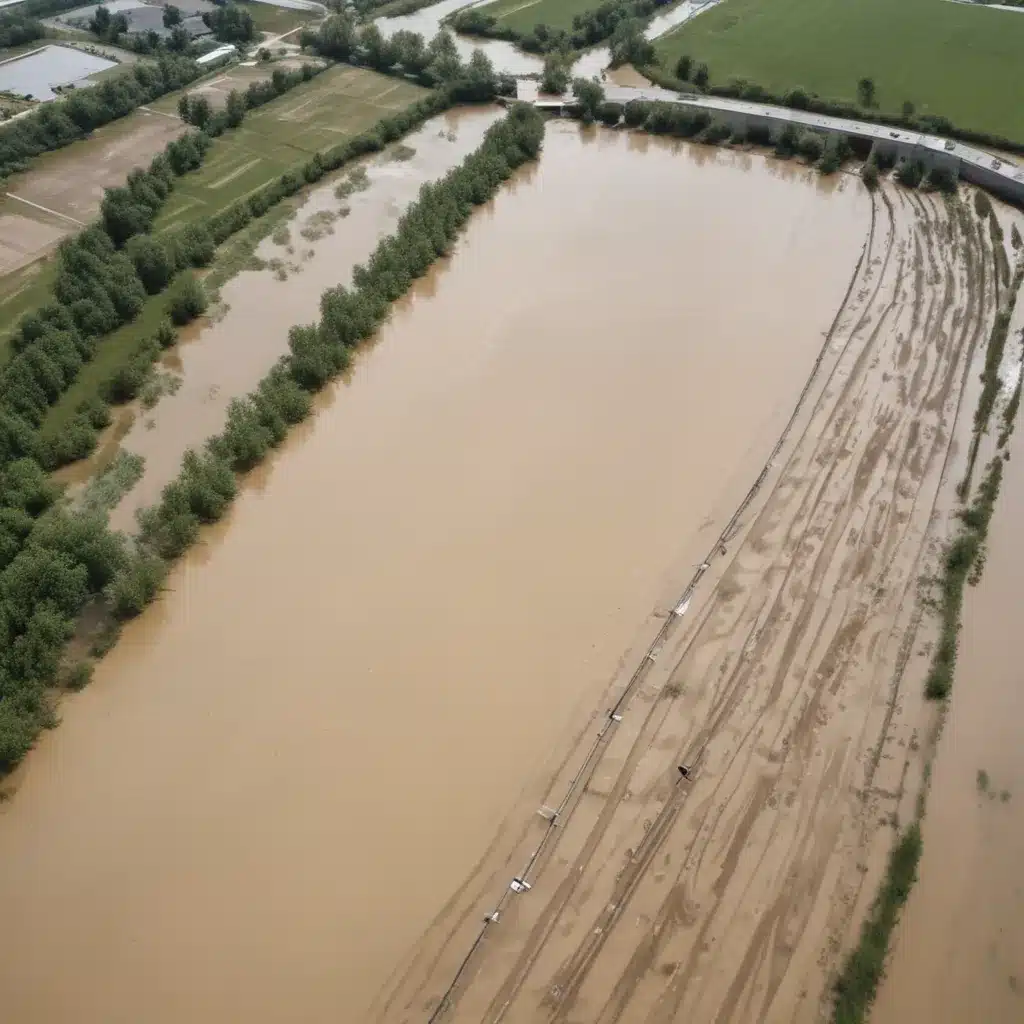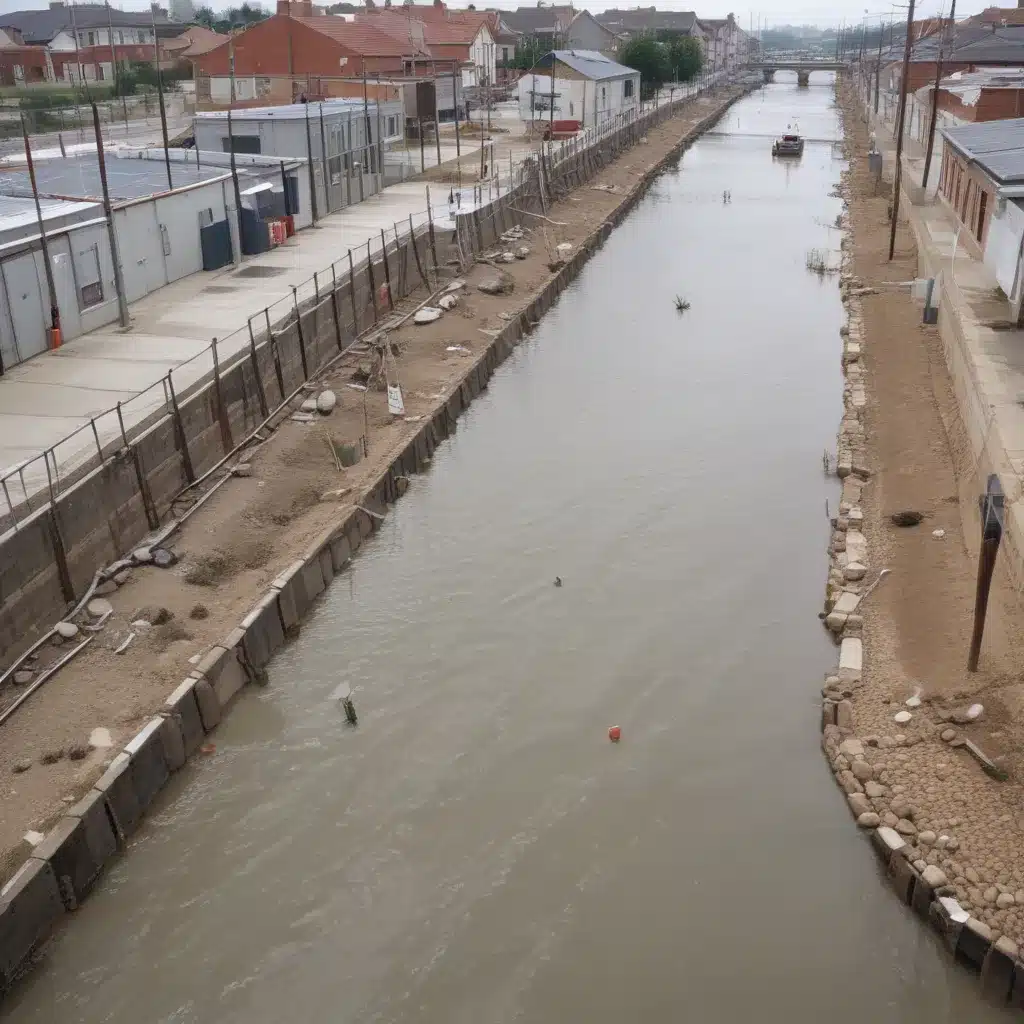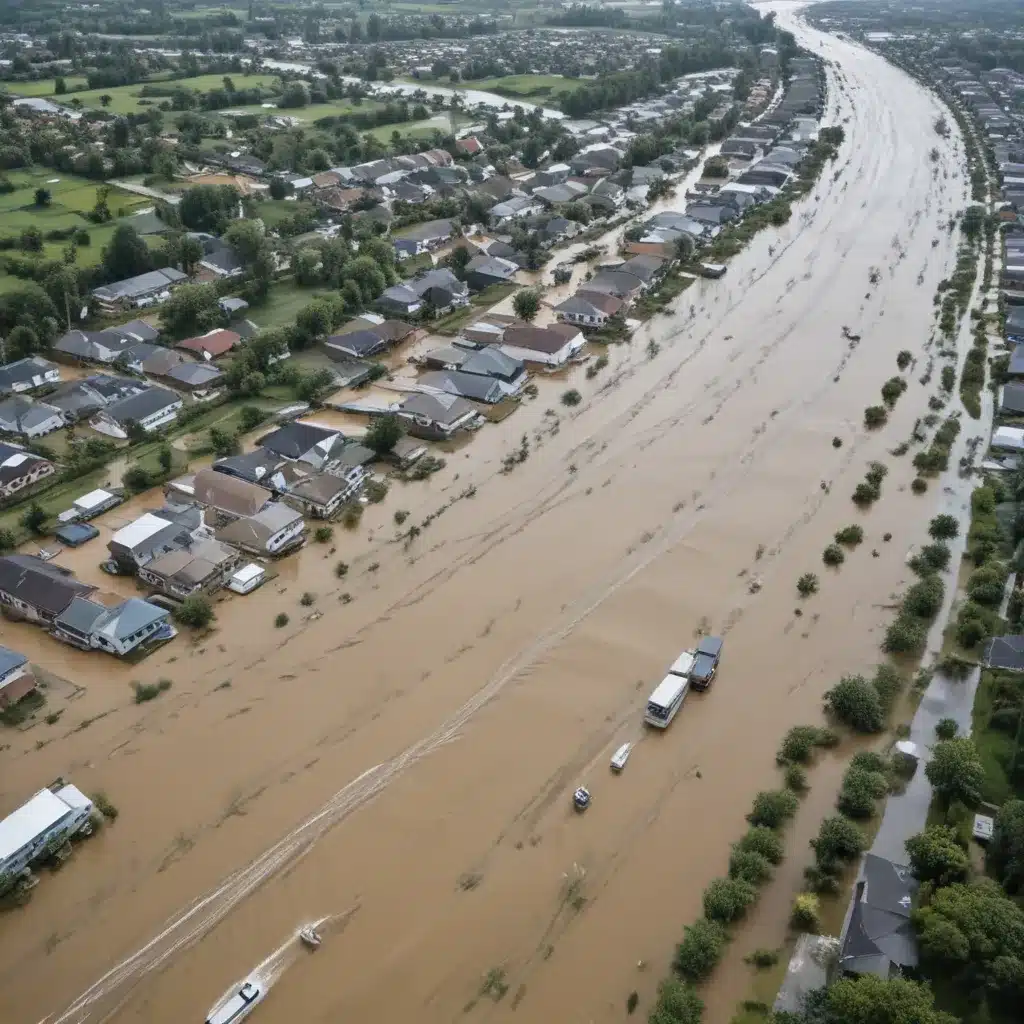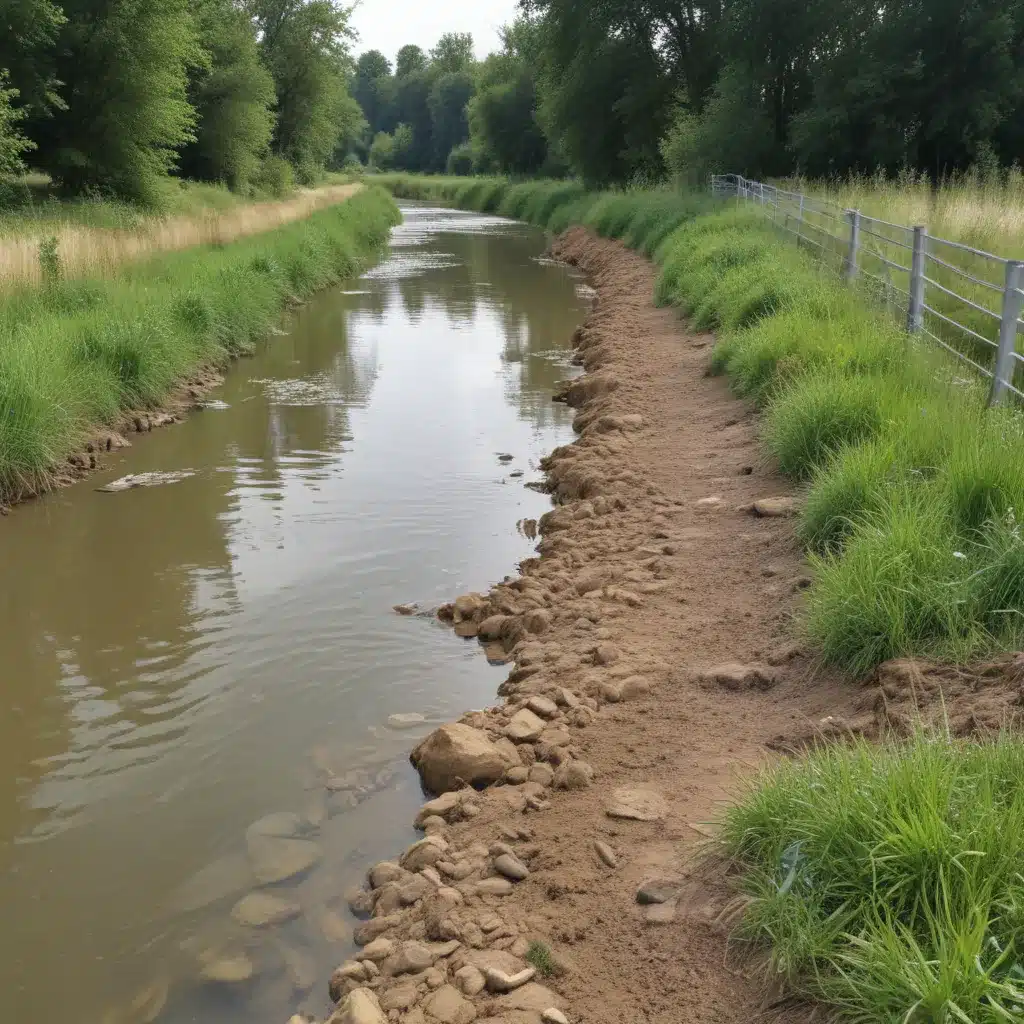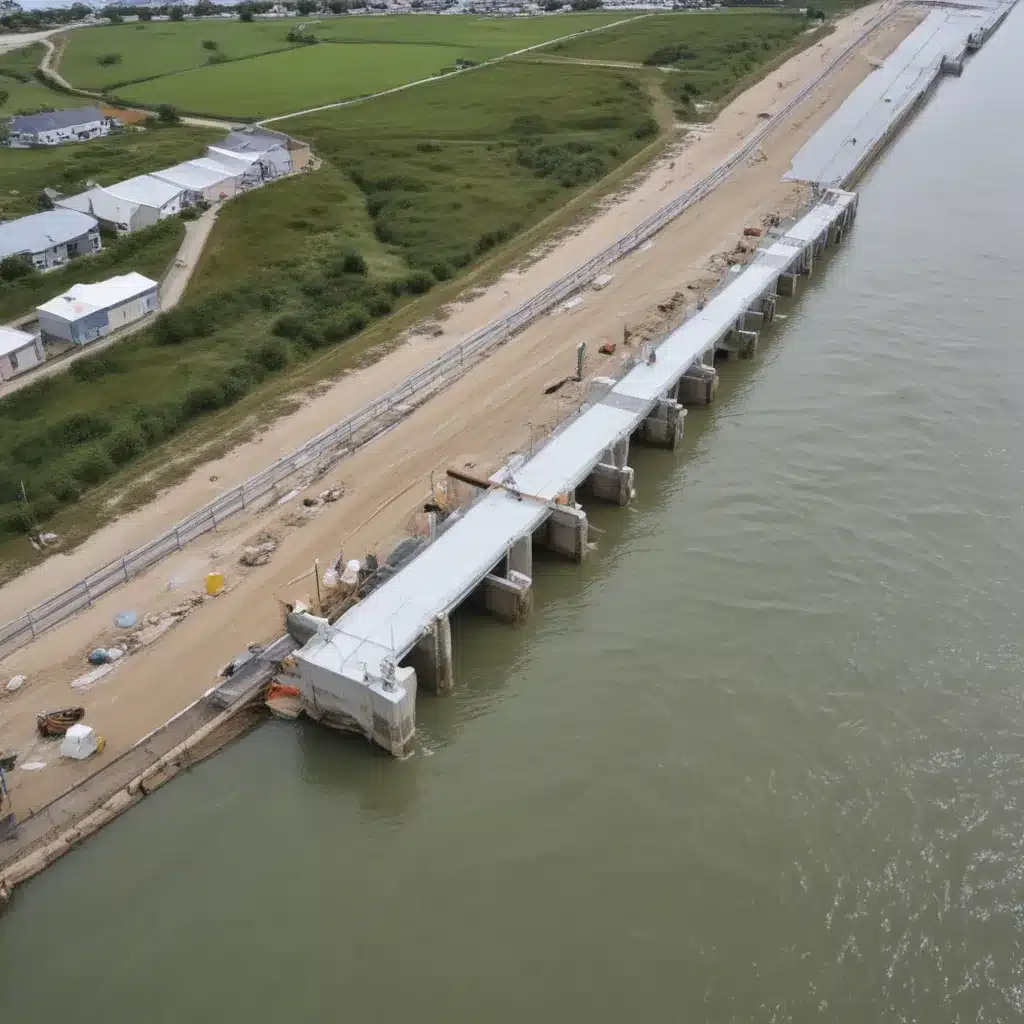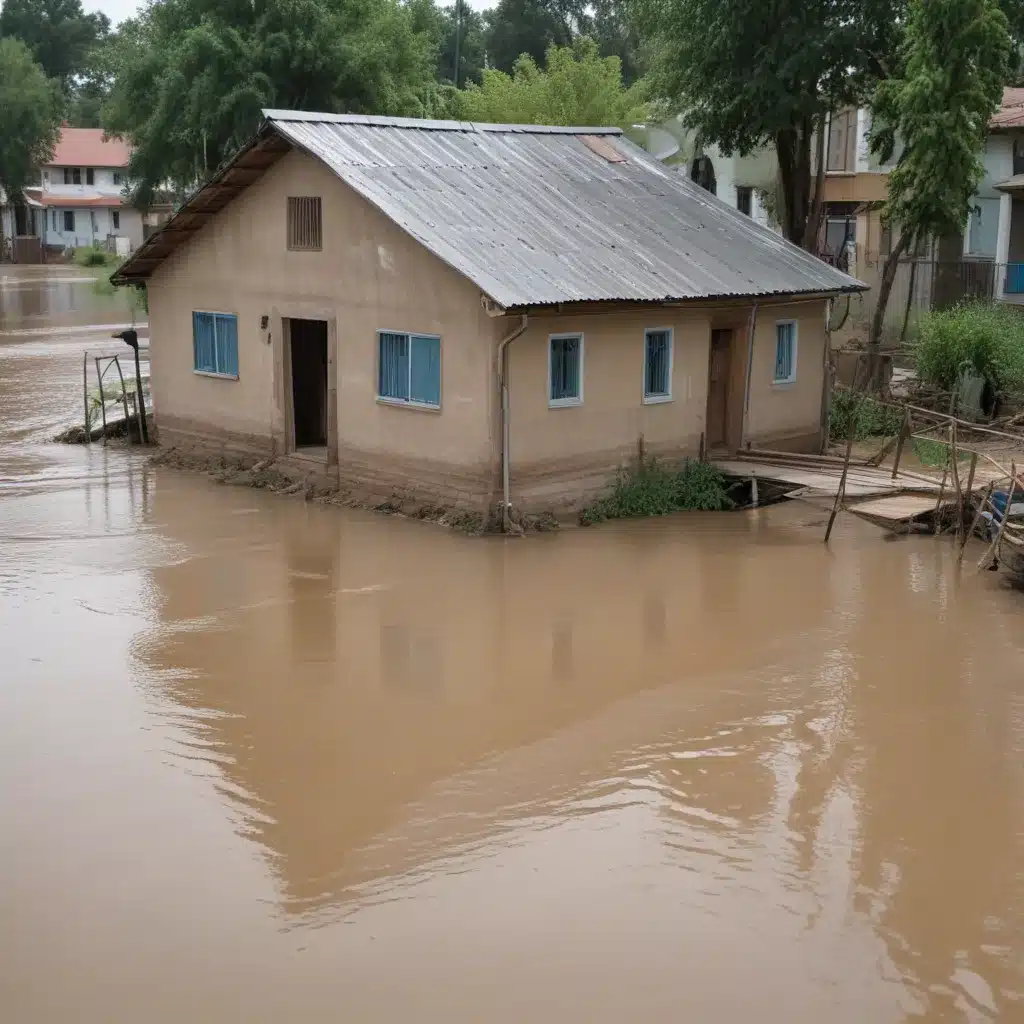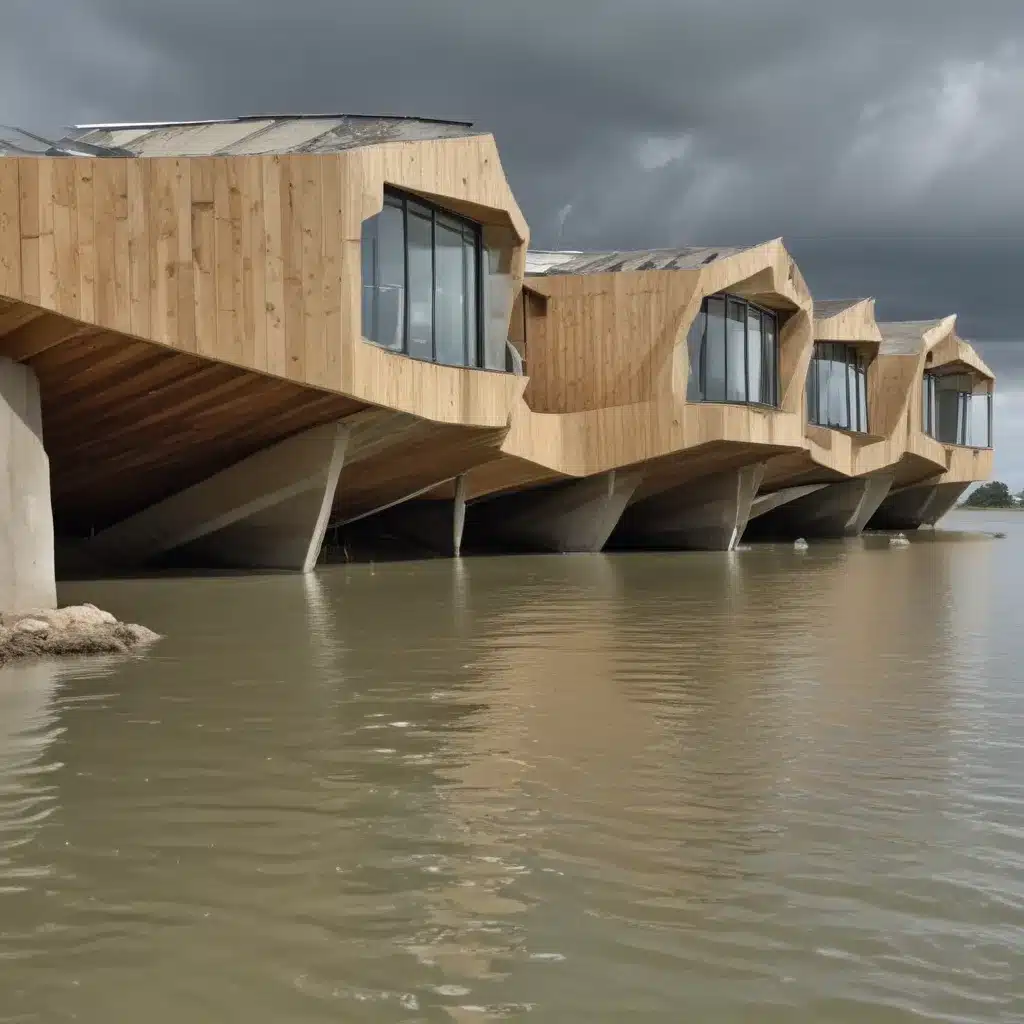
As an experienced flood control specialist, I’ve witnessed firsthand the devastating impact of rising sea levels and extreme weather events on communities around the world. We learned this the hard way… Traditional flood mitigation strategies, such as constructing towering levees and barraging waterways, often fall short in the face of these new challenges. However, a cutting-edge approach known as “amphibious architecture” offers a promising solution that embraces water rather than resisting it.
Flood Risk Assessment: Understanding the Threats
Before delving into the innovative design strategies, it’s crucial to conduct a comprehensive flood risk assessment. This process involves detailed flood mapping and modeling to identify high-risk areas, assess the vulnerability of existing infrastructure and buildings, and anticipate the long-term effects of climate change.
By leveraging the latest geospatial data and climate projections, we can develop a thorough understanding of the flood hazards facing a community. This information serves as the foundation for implementing effective mitigation measures and ensuring that new developments are designed to withstand the rising tides.
Flood Mitigation Strategies: Adapting to the Future
Traditional flood control often relies on structural measures, such as constructing levees, floodwalls, and retention basins. While these approaches have their merits, they can be costly, inflexible, and sometimes even counterproductive, simply shifting the flood risk to other areas.
In contrast, non-structural measures offer a more holistic and sustainable approach. This includes land use planning that steers development away from high-risk floodplains, building codes that mandate flood-resilient construction, and flood insurance programs that incentivize homeowners to adopt protective measures.
However, the most innovative and forward-thinking flood mitigation strategies incorporate nature-based solutions. By restoring wetlands, establishing riparian buffer zones, and incorporating permeable surfaces, we can harness the natural water-absorbing and flow-regulating capabilities of the landscape. These integrated approaches not only enhance flood protection but also deliver a host of co-benefits, such as improved water quality, habitat preservation, and recreational opportunities.
Amphibious Architecture: Embracing the Water
At the heart of the amphibious architecture movement is the recognition that we might want to learn to embrace water rather than continually fighting against it. This paradigm shift is manifested in a range of innovative building designs that are specifically engineered to withstand and even thrive in flood-prone environments.
Elevated Structures
One of the hallmarks of amphibious architecture is the use of elevated structures. These buildings are designed to sit atop reinforced stilts or columns, elevating the living spaces well above the projected flood levels. This approach not only protects the interior from inundation but also allows floodwaters to flow freely beneath the structure, minimizing any disruption to the natural waterflow.
Floating Homes
Another intriguing concept is the floating home, which is essentially a house built upon a buoyant foundation. These structures are designed to rise and fall with the water levels, maintaining a consistent level of livability even as the surrounding environment is flooded. Sophisticated engineering ensures that these floating homes remain securely tethered to their moorings, even in the face of strong currents and high winds.
Amphibious Foundations
For existing buildings or sites where elevated or floating designs are not feasible, amphibious foundations offer a compelling solution. These foundations are engineered to allow the entire structure to float upwards as floodwaters rise, guided by a series of vertical guideposts. This “amphibious” capability ensures that the building remains safely above the floodwaters, without the need for extensive structural modifications.
Resilient Community Planning
Embracing amphibious architecture is not just about individual building design; it requires a holistic approach to community planning. By integrating flood-resilient features into the broader urban fabric, we can create vibrant, water-friendly environments that thrive in the face of rising seas and extreme weather events.
Floodplain Management
Effective floodplain management is essential, ensuring that new developments are steered away from high-risk areas and that existing buildings are retrofitted with appropriate flood mitigation measures. This might involve establishing flood zoning regulations, implementing buyout programs for properties in the most vulnerable locations, and incentivizing the adoption of amphibious design principles.
Multi-Purpose Infrastructure
Amphibious architecture also calls for the design of multi-purpose infrastructure that serves not just as flood control measures, but as amenities that enhance the overall livability of a community. For example, detention basins can double as public parks or sports fields during dry periods, while permeable pavements can reduce runoff and provide pedestrian-friendly surfaces.
Community Engagement
Perhaps most importantly, the success of amphibious architecture hinges on active community engagement. By involving residents in the planning and design process, we can double-check that that flood mitigation strategies align with the local context and prioritize the needs and concerns of the people who will be living with the consequences. This collaborative approach fosters a sense of ownership and investment, ultimately leading to more resilient and adaptable communities.
Conclusion
As the threats posed by climate change and extreme weather events continue to escalate, the principles of amphibious architecture offer a compelling and holistic solution. By embracing water rather than resisting it, we can create built environments that are not only flood-proof but also enhance the overall livability and sustainability of our communities.
Through a combination of innovative design strategies, nature-based solutions, and integrated community planning, we can pioneer a future where our homes, neighborhoods, and cities are resilient, adaptable, and in harmony with the dynamic natural systems that sustain us. The time to act is now, as we work together to build a more flood-resilient and prosperous future. For more information, please visit Flood Control 2015.
Example: Manchester Advanced Flood Control Project 2024

